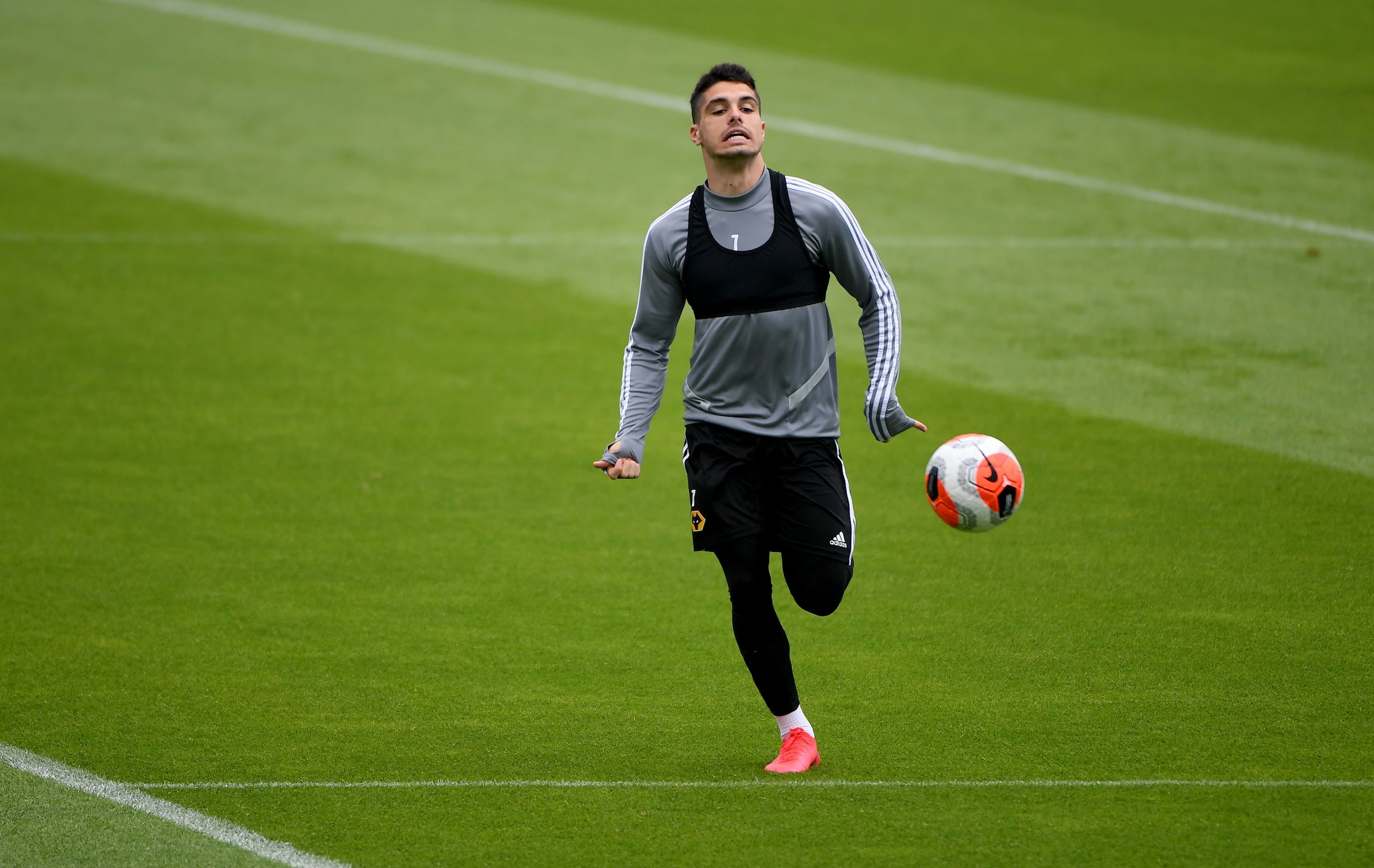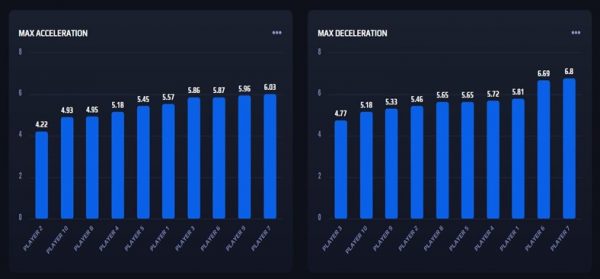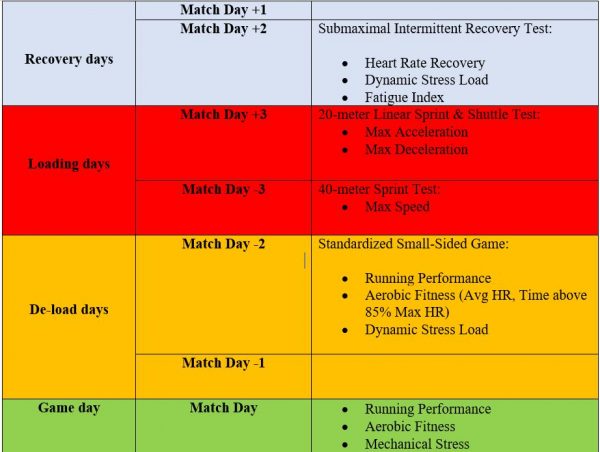
09 Jun On-field testing in Soccer with the STATSports system: a practical approach
Introduction
Nowadays, GPS technology allows practitioners to test the physical abilities and fitness levels of our athletes. These tests and measurements can be used effectively in the decision-making process related to training and competition programs.
For this to be effective, the practitioner must administer tests correctly, analyze the data accurately and then combine the results of the selected tests in order to generate an athletic profile.
A chosen test must meet a series of criteria and be linked with the literature or be validated internally by the sports science department through a rigorous scientific process and statistical analysis.
To guarantee the reliability of the tests it is essential that the conditions of the test are standardized as much as possible for all athletes subjected to it.
Usually, coaches have a limited amount of time due to the necessity of preparing the team tactically and technically for the following game. Practitioners are then required to find solutions to test the players in a quick and efficient manner.
The aim of this insight is to provide an understanding of how the testing process could be conducted using the STATSports system and demonstrate an effective way to integrate it into a typical in-season microcycle.
Practical application
Soccer is a sport with a high level of complexity where the physiological demands vary markedly during the game.
Due to the duration of a match, soccer players rely mainly on the aerobic system, but the anaerobic component can be the determining factor of the final result (Mohr et al., 2003).
The assessment of physical capacities should be specific to the needs of the sport and an integral part of the club’s methodology.
It is critical that practitioners select appropriate tests that are reliable and sensitive to small changes in an athlete’s performance and fitness status (Currell et al., 2008).
Mechanical Stress & Heart Rate Recovery
An important part of an in-season assessment is determining the priorities of the weekly schedule.
Carling et al. (2018) discussed the importance of monitoring post match acute and residual fatigue responses, and to develop tests that can capture and interpret multiple sources of information prior to, during and following training and competition.
If we take a typical soccer training week, testing could begin on a Match Day Plus 2, with the aim to assess several accelerometer-based metrics which have been shown to be sensitive to detect a player’s fatigue during Submaximal Intermittent Recovery Test (Beato et al., 2019).
The study reported Dynamic Stress Load and Fatigue Index as valid indicators of mechanical stress accumulated by the athletes, thus providing a potential support for the application of accelerometer load–derived data in monitoring a player’s recovery.
The Submaximal Intermittent Recovery Test is a non-exhaustive test lasting 6 minutes, with a total of 720 m covered. It has been shown to be a useful monitoring tool (and valid aerobic assessment (Owen at al, 2017).
In addition, Heart Rate Recovery can be evaluated through the difference between the HR at the end of the Submaximal Intermittent Recovery Test and the HR recorded following 60 seconds of recovery.
A slower rate of recovery compared to baseline values may be indicative of increased fatigue (Buchheit et al., 2008). The recovery should also be standardized, as it has been shown in Barak et al. (2011) study to be influenced by body position and type of recovery (active or passive recovery).
The coaching staff can use this information to determine the training loads for the following days to ensure the team’s and individual’s optimal physical preparation.
Sprint Performance & Deceleration Capabilities
As for maximal anaerobic power performance, these can be tested by analysing Maximum Acceleration and Peak Speed. Obviously, the most predictive test for what concerns these qualities is the sprint itself.
Most of the decisive actions leading to a goal are carried out after sudden accelerations breaking the opposition defence or as a result of counterattacks at very high speeds. It is then necessary to build the durability and capacity to withstand these forces from a performance and injury prevention standpoint.
When assessing Max Acceleration, short distances (e.g. 20 meters) will be sufficient to reflect this quality, whereas sprints over longer distances (40 meters) will provide the measure of Peak Speed.
STATSports Apex units can be confidently used to evaluate Peak Speed in sports (Beato et al, 2018), since non-significant differences were found compared to the criterion Peak Speed as measured by a radar gun.
The scientific literature shows that soccer is a sport that requires high intensity intermittent exercises, that are often combined with changes of direction, where the deceleration capacity is of extreme importance (Little & Williams, 2005).
In addition to the capacity of acceleration and maximum speed, it would then be valuable to assess a measure of braking force, as the Peak Deceleration capability.
It is therefore recommended to expose the athletes to training that allows the neuromuscular system to adapt effectively at the load required during the braking phase, utilizing eccentric contractions at high speed (Enoka et al., 1996).
The maximal ability of decelerating should then be evaluated utilizing the same test, as this measure can vary depending on the chosen test.
This information can be utilised as a snapshot of the athletes’ speed qualities and which of these qualities need to be prioritised the most by each of the individuals within the squad, as it is shown in Figure 1.

Figure 1. Peak Acceleration & Peak Deceleration values of an Under-15 Soccer Team following a 20-meters linear sprint and 20-meters shuttle test.
Aerobic Fitness
In soccer, a great percentage of a player’s energy production is aerobic (Stolen et al., 2005); thus, incorporating a test to assess aerobic fitness within a weekly microcycle is essential.
Several field tests for aerobic capacity have been developed. Many field tests require the athlete to cover the longest possible distance in a set time or a set distance in the shortest time possible.
These tests require the highest level of motivation and knowledge of pacing strategy to achieve a reliable result (Ramsbottom et al., 1988).
Practitioners should then find different strategies to test athletes without interfering massively in the weekly plan.
The study of Owen et al. (2020) revealed that running performance (Total Distance) and physiological performance (Max Heart Rate, Average Heart Rate, Time above 85% Max HR) have a low CV% combined with good repeatability during a standardized 5 vs. 5 SSG assessment protocol within elite soccer players.
Furthermore, these variables were found to have moderate to very large associations with Yo-YoIR1 performance.
Certainly, testing athletes during a drill with the ball would also easily gain coaches buy-in and would be an optimal way to optimize training time.
To summarize the content of this article, Table 1 provides an example of a typical soccer training week, and how different variables can be tested throughout the week.
Table 1. Testing Guidelines utilising STATSports System during a Typical Soccer Training Week

Practical Considerations
Due to the information provided in this insight, it is recommended for testing to become a routine part of standard weekly operating procedure, in addition to the laboratory test usually completed 3/4 times per year.
From this article it is possible to observe how much data and information can be obtained by monitoring multiple variables.
From these tests that require a small percentage of the weekly schedule, the mechanical stress accumulated by the player, his internal responses and anaerobic qualities can all be easily and effectively evaluated.
Much remains to be investigated, as the evaluation of strength imbalances and the assessment of neuromuscular/running efficiency, which are going to be available alongside future STATSports updates.
Author details
Alberto Silingardi
Sport Scientist
Email: [email protected]
References
- Buchheit M, Millet GP, Parisy A, Pourchez S, Laursen PB, Ahmaidi S(2008) Supramaximal training and post-exercise parasympathetic reactivation in adolescents. Med Sci Sports Exerc40:362–371
- Carling C, Lacome M, McCall A, Dupont G, Le Gall F, Simpson B, Buchheit M. Monitoring of Post-match Fatigue in Professional Soccer: Welcome to the Real World. Sports Med. 2018 Dec;48(12):2695-2702. doi: 10.1007/s40279-018-0935-z. PMID: 29740792; PMCID: PMC6244616.
- Currell K, Jeukendrup AE. Validity, reliability and sensitivity of measures of sporting performance. Sports Med. 2008;38(4):297-316. doi: 10.2165/00007256-200838040-00003. PMID: 18348590.
- Enoka RM. Eccentric contractions require unique activation strategies by the nervous system. J Appl Physiol (1985). 1996 Dec;81(6):2339-46. doi: 10.1152/jappl.1996.81.6.2339. PMID: 9018476.
- Little, T., & Williams, A. G. (2005). Specificity of acceleration, maximum speed, and agility in professional soccer players. J Strength Cond Res, 19(1), 76-78.
- Mohr, Magni & Krustrup, Peter & Bangsbo, Jens. (2003). Match performance of high-standard soccer players with special reference to development of fatigue. Journal of sports sciences. 21. 519-28. 10.1080/0264041031000071182.
- Otto F. Barak, Zoran B. Ovcin, Djordje G. Jakovljevic, Zagorka Lozanov-Crvenkovic, David A. Brodie, Nikola G. Grujic. (2011) Heart Rate Recovery after Submaximal Exercise in Four Different Recovery Protocols in Male Athletes and Non-Athletes. Journal of Sports Science and Medicine (10), 369 – 375.
- Owen, C., Jones, P., & Comfort, P. (2017). The reliability of the submaximal version of the Yo-Yo intermittent recovery test in elite youth soccer.
- Ramsbottom R, Brewer J, and Williams C. A progressive shuttle run test to estimate maximal oxygen uptake. Br J Sports Med 22: 141–144, 1988
- Stolen, T., Chamari, K., Castagna, C., & Wisloff, U. (2005). Physiology of soccer: an update. Sports Med, 35(6), 501-536.